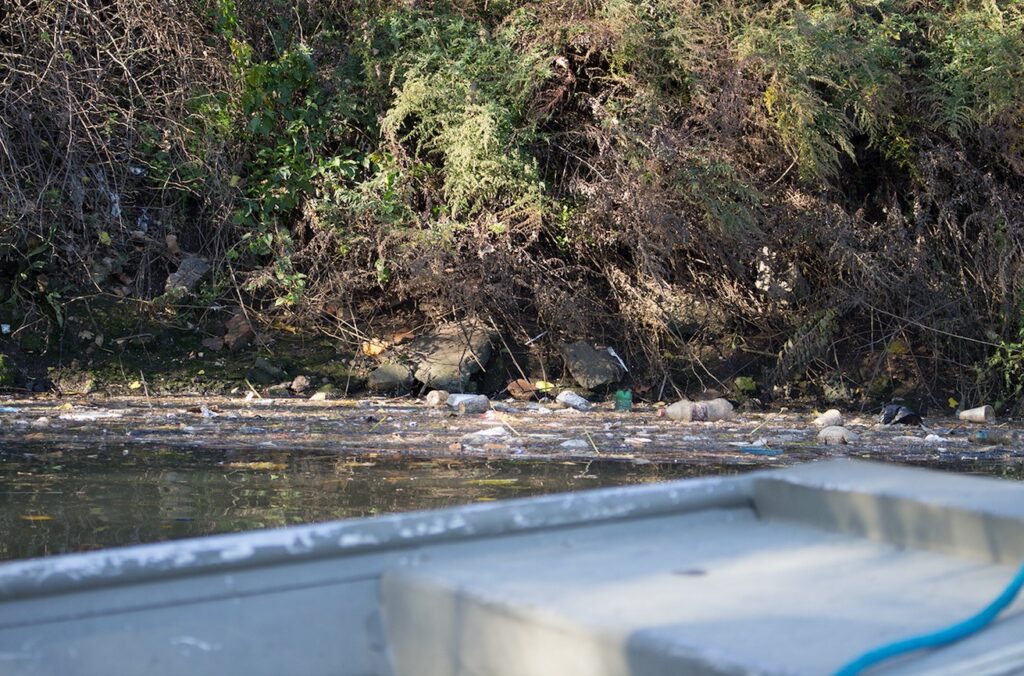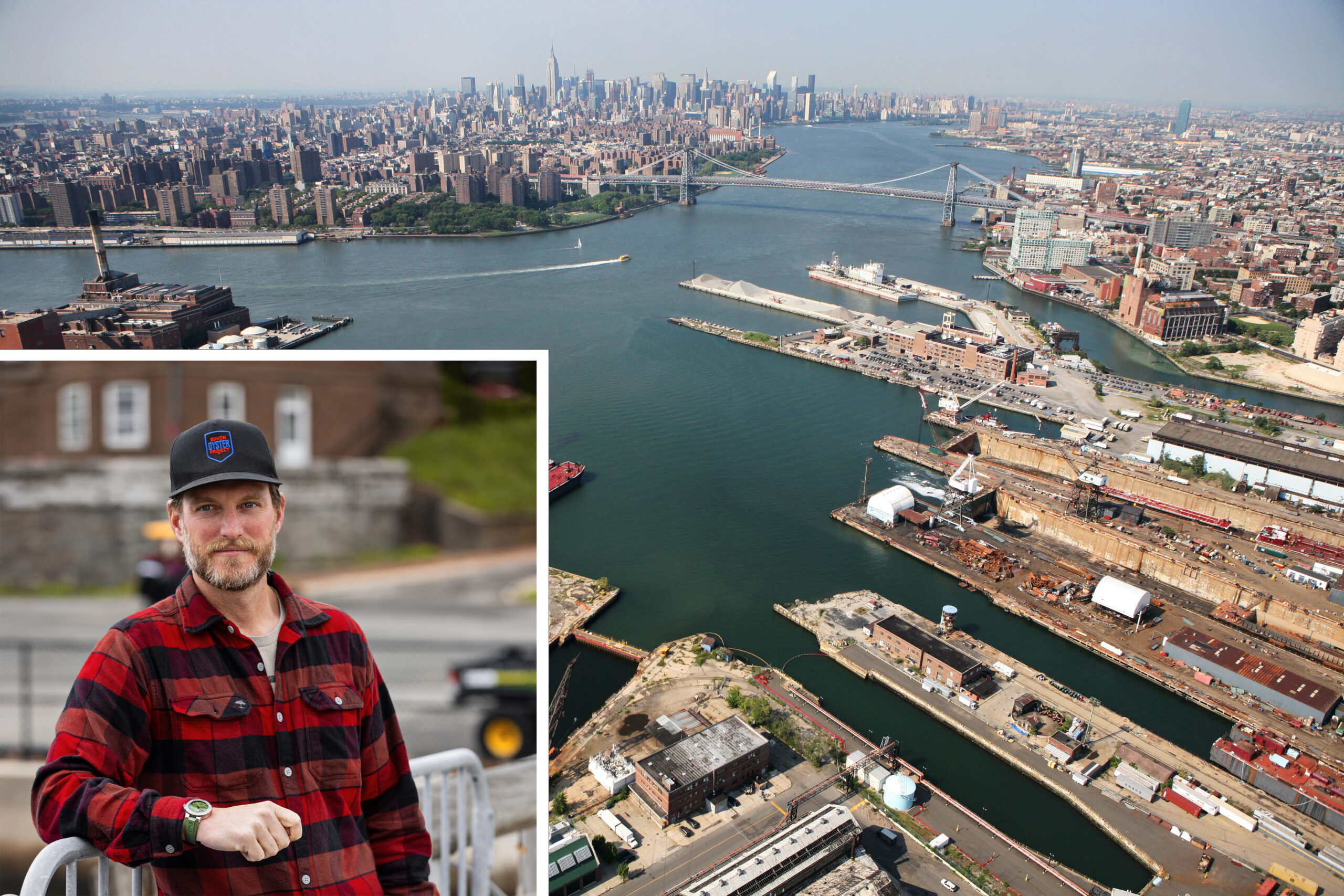But, each and everytime it rains, our combined sewer system overflows. Street drains run into sanitary sewers and overflow into the Harbor at over 400 different locations. On these days, runoff from the street combines with everything we flush down our toilets and it all runs together directly into this wild space filled with animals.
Photo: Cody Brooks/Brooklyn Eagle
On these days, after a rain, I’ve seen the night herons step gingerly between diapers, small bags of pet waste and thousands of floss picks to try to find their food. Giant, swirling piles of street trash collect in the same backwaters that are, on other days, the perfect hunting grounds. Cigarette butts, pens, plastic bottles, trash bags, condoms and tampon applicators line our rivers and bays along with the fetid, polluted water pouring from our outdated, overburdened wastewater treatment system. For a day or two following each rain event, the Harbor is gross. All of the animals that call the Harbor home are put at risk after the rain.

Photo: Cody Brooks/Brooklyn Eagle
New York City is not alone, this problem of combined sewer overflows exists in every major coastal city and the investment required to prevent overflows is massive. But it is possible. The current plan by the city to address this issue is totally inadequate and will only result in a 1.3% reduction in the volume of sewage pouring into waterways each year. New York City could be the only major coastal city in the world that properly handles its wastewater. The only major coastal city that keeps the water around it clean and welcoming to marine life. The solution is simple, less runoff and more holding tanks. New construction could be required to hold wastewater onsite during the rain, to be routed to treatment plants once the weather clears. Street plantings and porous pavement prevent runoff and make streets better. This…
Read the full article here

Leave a Reply